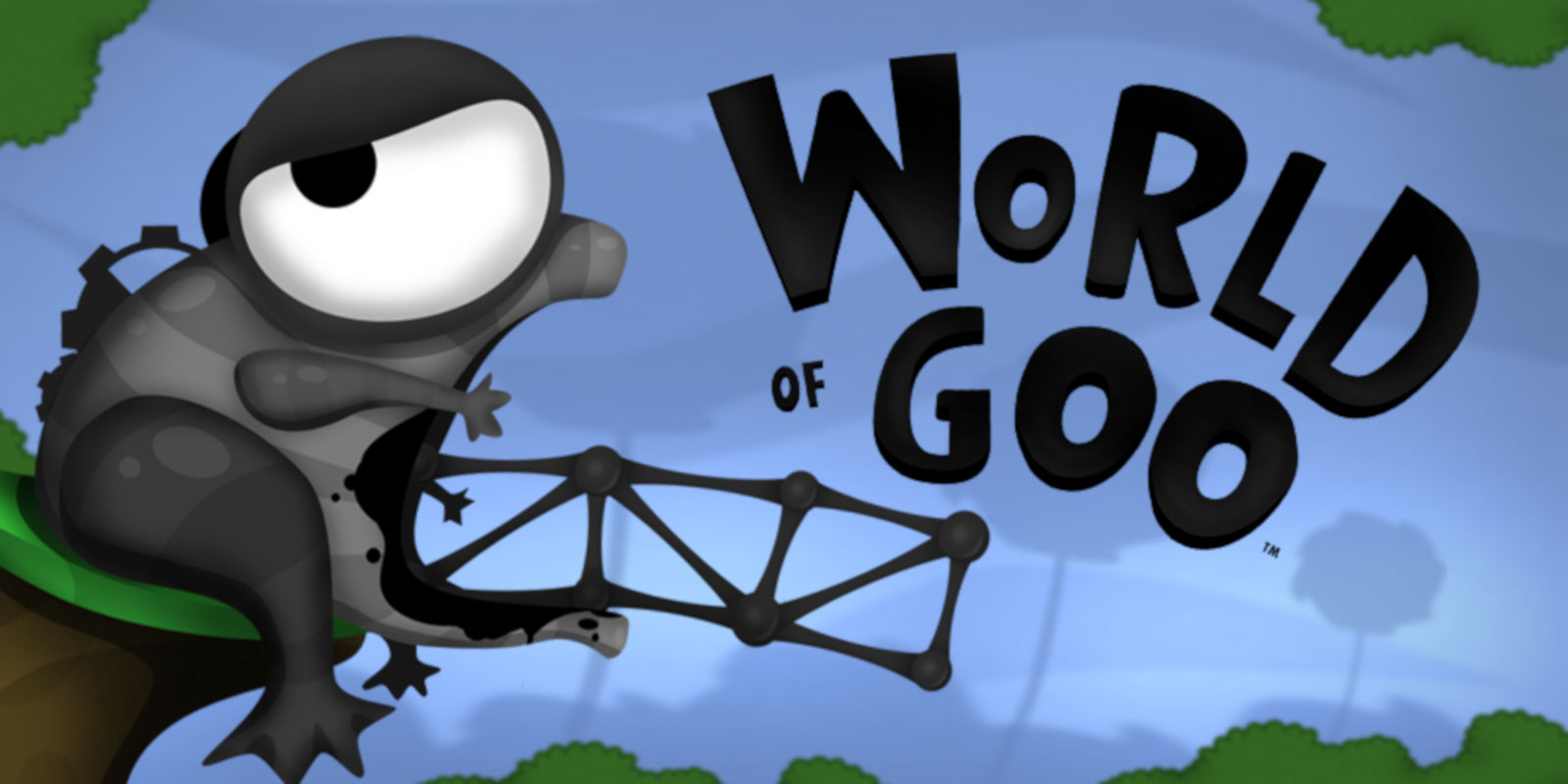World of Goo released in 2008, so I'm a bit late to the scene—but as a so-called "patient gamer," old games are my jam, and I'm glad I finally gave World of Goo a proper go. It's a smart game, not only because it fully explores the bounds of its game mechanics, but because it demands a lot from its players and rewards them accordingly.
World of Goo is comprised of thousands of little goo balls that look like drops of oil. You can connect goo balls to each other to create gooey structures that obey the laws of physics. The more you build, the heavier it gets; the higher you go, the wobblier it gets. When a part becomes too heavy, the gooey connections break and the structure comes tumbling down.
In every level, you start with a certain number of goo balls and the goal is to reach a pipe located somewhere in the level without using all of the goo balls at your disposal.
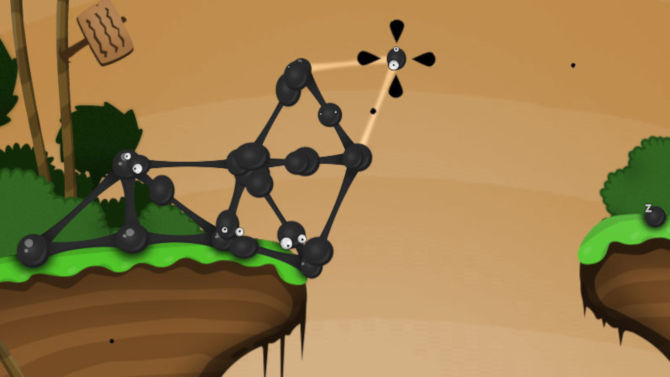
As you progress, you're introduced to other kinds of goo balls with unique properties: some that fall with gravity and hang low, others that ignite when they touch fire, and still others that drift upwards like helium balloons. Each type of goo ball plays to a certain aspect of physics, and that's what makes World of Goo interesting.
The Good
What's most remarkable about World of Goo is how simple it is. The entire game is played with only one action: the mouse click. Actually, there's a type of goo ball in the latter levels that involves clicking and dragging, but that's as far as "game controls" go.
Using simple actions to solve complex goals is the holy grail of puzzle games. We're talking about a learning curve that's almost non-existent, yet paves the way for all kinds of riveting challenges that require thinking outside the box. This is the kind of perfect storm that skilled game designers are always striving for, and none of it is contrived. In fact, it's the kind of game that makes you think, "Why didn't I think of this?"
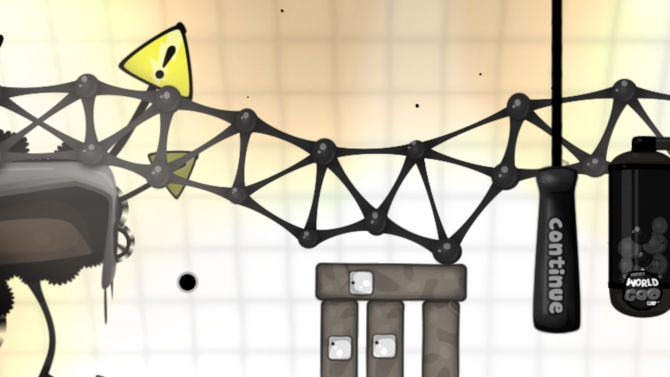
And it certainly delivers as a puzzle game. Despite only introducing a handful of mechanics, it explores each one to the fullest and leaves no stones unturned. A lot of puzzle games fail in this regard, presenting series of levels that are basically the same challenge over and over. But World of Goo's levels feel different, specific, refined. The developers put a lot of thought into each one, and it shows.
World of Goo also sidesteps another common flaw in puzzle games: the progression plateau. The levels in this game are difficult, but they never feel impossible. And if you ever get stuck, you always have the option to "Skip this level for now" (I love that the developers added this in.) Hardcore puzzlists who really want to test their brains (and egos) can strive for the optional "OCD" achievement in every level. If the game is hard, you can progress; if the game is easy, you can still be challenged.
And we can't forget that we, as gamers, owe a lot to World of Goo, whose commercial success in 2008 proved that indie games could be a viable path for game developers, thus opening the door for more indie success stories.
The Bad
World of Goo has personality—perhaps a bit too much, if you ask me. Normally this wouldn't be a negative, but it feels like the developers got a bit too caught up in it and flew off the deep end, trying way too hard to be quirky and distinctive and humorous to the point where it just becomes eye-rollingly tiresome. It starts off well enough, but quickly loses much of its narrative charm by the end.
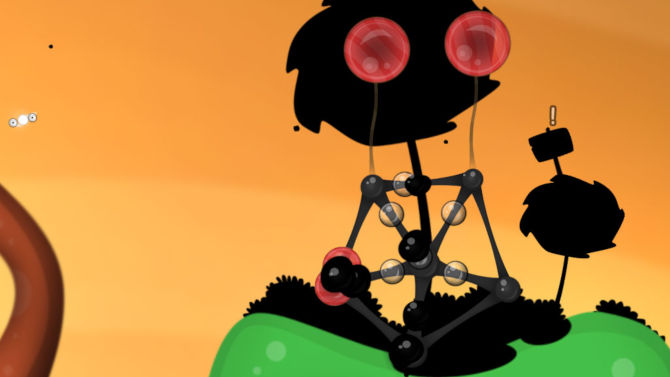
And while all of the puzzles are well-designed, some of them just aren't fun. One level in particular sticks out in my mind: you're instructed to attach and detach and reattach a set of balloons on a goo structure in a way that causes it to spin, allowing you to use its momentum to travel over a chasm. An interesting exploration of physics? Sure. Fun to execute? Not in the slightest. These kinds of levels could've benefited from a rework, or even being cut from the game altogether.
I also found the first quarter of World of Goo to be extremely dull. It took nearly an hour (yes, it's a short game) before the fun began peeking its head out. And while Chapter 2 is when it gets interesting, it isn't until Chapter 4 (the last chapter) that the real fun shines. This is partly due to Chapter 4 introducing a radical shift in gameplay, so much so that it feels like a different game. This is a critical misstep, on par with films that try to execute third-act genre twists: those who enjoyed the first two-thirds won't like the last third, while most of those who'd enjoy the last third won't make it through the first two-thirds.
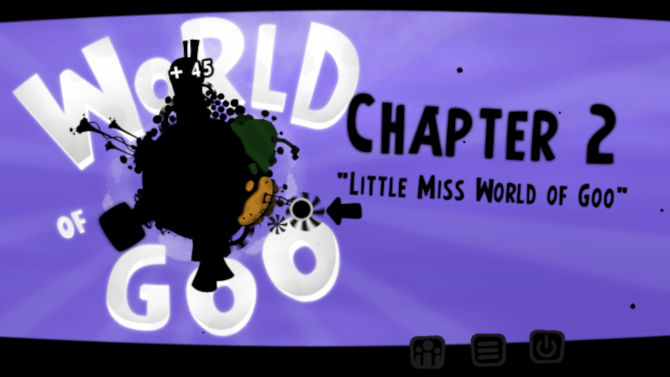
Maybe I'm exaggerating. Or maybe I'm not. I don't regret playing through the whole game, but if I wasn't playing with a review in mind, I honestly would've quit way back in Chapter 1.
Other minor complaints include: insanely repetitive music where each track is essentially on a 15-second loop, and the lack of a level editor.
The Verdict
World of Goo is respectable for what it set out to do. It's a brilliant exploration of refined game mechanics, and the end product is surprisingly polished. It holds up well today, even 10 years later. It's a thinker's puzzle game that's fun if physics makes sense to you, frustrating if it doesn't. All in all, it's a good game that's worth a try if you haven't already played it.
World of Goo
World of GooThe Good
- Simple gameplay, complex puzzles
- Skippable levels if you get stuck
- Optional challenges for hardcore puzzlists
The Bad
- Too much personality
- Some puzzles aren't fun to suffer through
- Short, repetitive music
